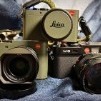The heck with the crop factor....
-
Recently Browsing 0 members
- No registered users viewing this page.
-
Similar Content
-
crop curiosity
By markc2,
- 12 replies
- 809 views
-
- 10 replies
- 673 views
-
- 8 replies
- 571 views
-
- 15 replies
- 2,159 views
-
- 3 replies
- 746 views
-


Recommended Posts
Join the conversation
You can post now and register later. If you have an account, sign in now to post with your account.
Note: Your post will require moderator approval before it will be visible.